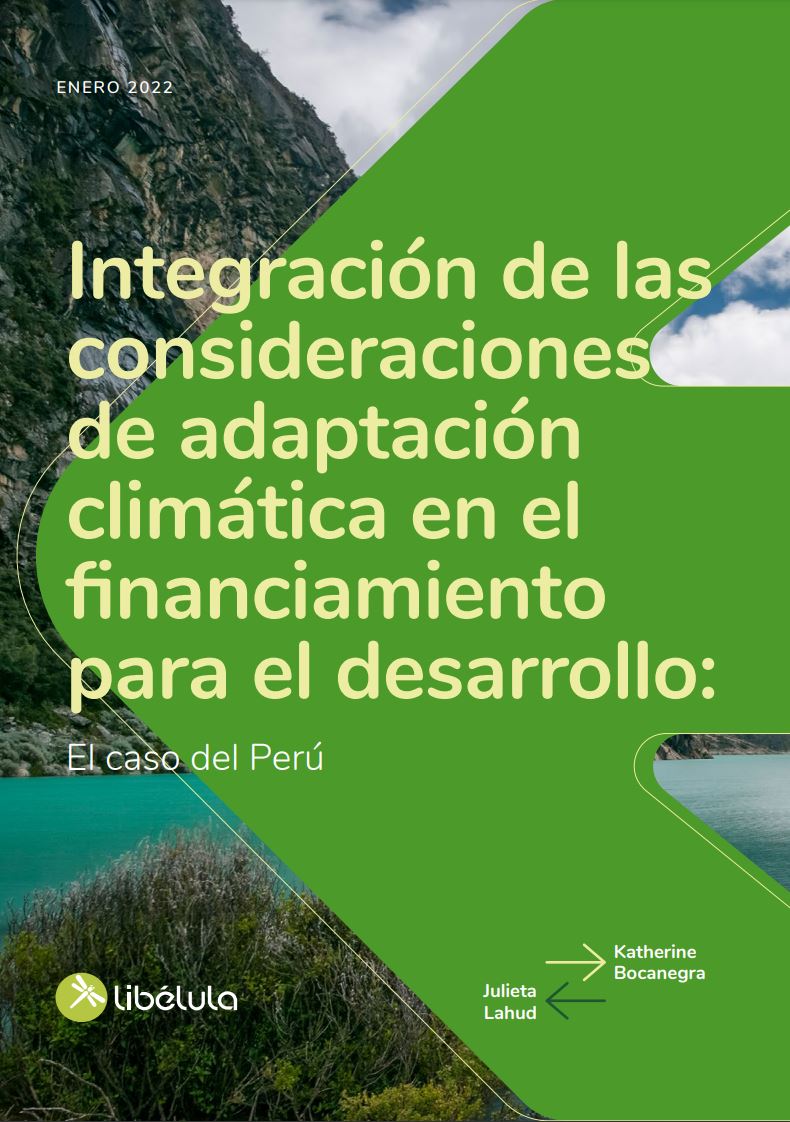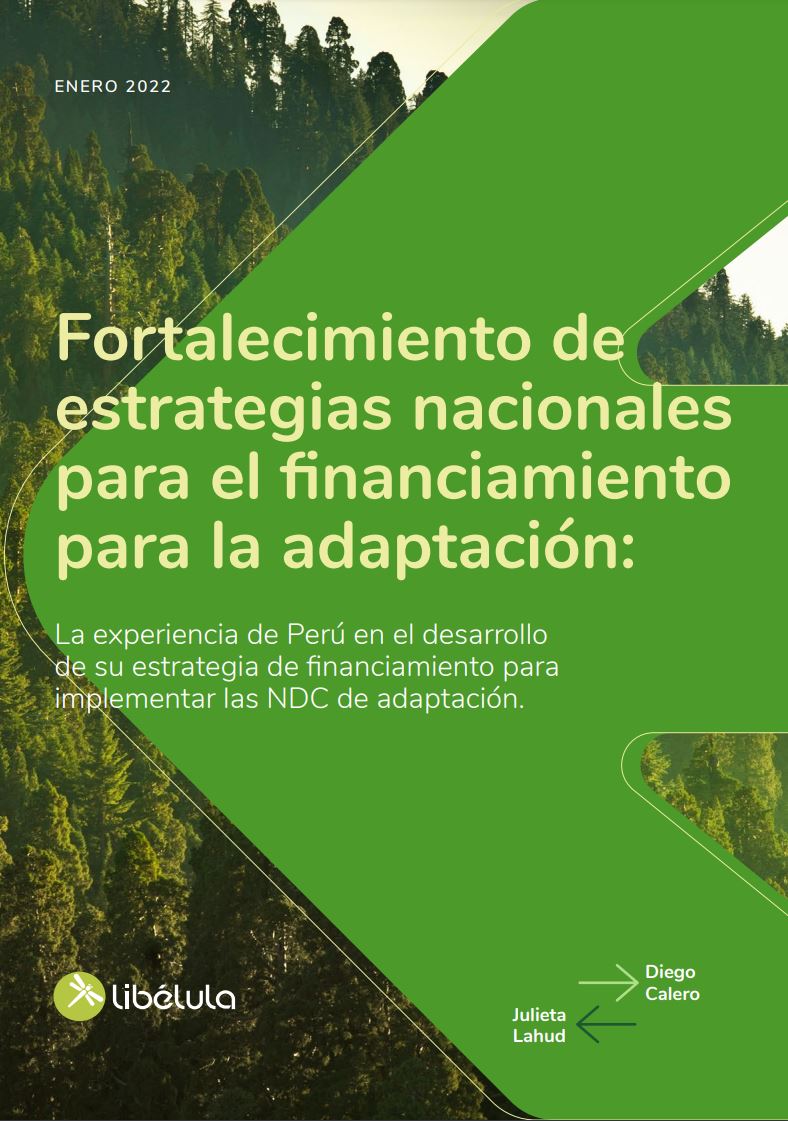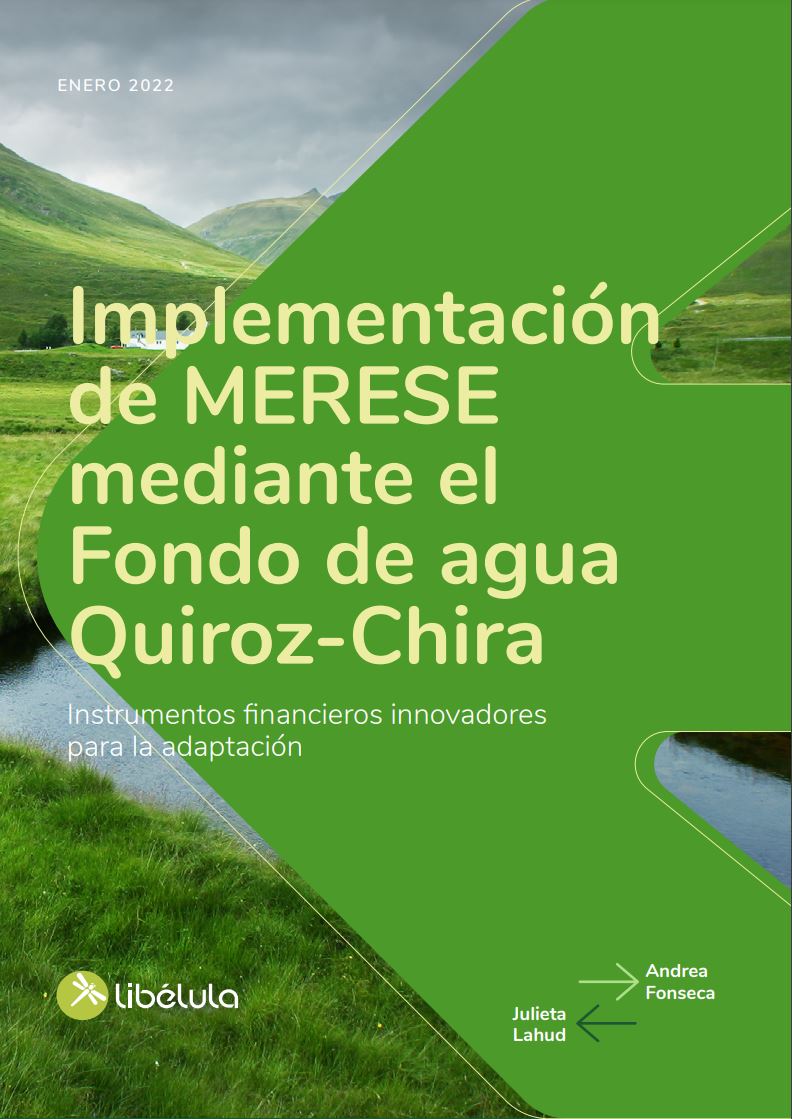Peru's Strategy for Adaptation Finance

An ongoing and necessary process to accelerate the country's climate action
Background
Peru has demonstrated its commitment to address climate change through actions at both the international and national levels. Undoubtedly the Peruvian Government, through the Ministry of Environment, has been developing different frameworks and regulations that help implement these priority adaptation actions. In 1992 it signed the United Nations Framework Convention on Climate Change (UNFCCC) and ratified the Paris Agreement in 2015. The country's Nationally Determined Contributions (NDCs) set out how Peru will work to achieve the objectives of the Paris Agreement, in terms of adaptation there are 92 measures.
Relevant developments
Among the advances, the National Adaptation Plan (NAP) of Peru published during 2021 stands out, which, among the information it contains, establishes the financing needs to comply with the priority adaptation actions. Furthermore, there is a specific chapter on finance which identifies the current shortfall with respect to existing sources of funding, a synthesis of possible sources for the prioritized adaptation measures (such as the national budget, bilateral/multilateral providers, the private sector) and opportunities to improve access to these sources. In general, the NAPA presents where funding mechanisms, whether public, private or international cooperation, should be used (MINAM,2020).
What is expected from the Climate Finance Strategy in Peru?
The Climate Finance Strategy (under construction to date) will define the financial resources needed to reduce greenhouse gas emissions and achieve adaptation to climate change, all as part of the implementation of its NDCs. In this work, it is expected to provide a coordinated approach to increase national and international financing, both from the public and private sectors, including Multilateral Development Banks (MDBs). In addition, it should be noted that the Ministry of Environment and the Ministry of Economy and Finance are the public entities that have been working on the definition of this strategy.
Pointedly, the strategy for adaptation financing will be composed of many elements, recognizing that a document is only one aspect of an approach to scaling up financing for adaptation priorities. The 2018 Framework Law on Climate Change and its 2019 Regulation stipulate that the government will prepare a cost-benefit analysis; identify mechanisms to improve access to finance; develop a system to track climate finance; and report on the finance raised for climate change (Government of Peru, 2018). In addition, the law establishes a public budget approach that obliges all levels of government to incorporate climate change considerations into their public budget and spending decisions, and evaluate all investment projects for climate risks and vulnerabilities.
This will build on the NAPA financing chapter that estimated the costs of implementing priority adaptation actions, calculated the financing gap, and identified potential sources of funding for these adaptation actions, including national budget, bilateral and multilateral providers, and the private sector. Other work includes economic assessments of adaptation measures and the preparation of guidelines for the strategic and complementary use of international climate funds, including reporting requirements.
What is expected from Multilateral Banks in this process?
At the country level, Multilateral Banks (MDBs) such as the World Bank and the Inter-American Development Bank recognize adaptation as a key issue that must be addressed to prevent climate change from further threatening the national economy and its natural assets (IDB, 2017) (World Bank Group, 2017). In line with the above, MDBs are encouraged to keep their strategies aligned with Peru's adaptation priorities by evaluating the most strategic way in which the resources provided by them can be used. Likewise, to maintain climate risks at the project level in their evaluation and design.
Peru is well positioned to access MDB funding for adaptation priorities due to its high vulnerability and efforts to prepare a robust NAPA, but will need to increase its capacity to present bankable adaptation projects (projects that comply with all the information required by a financial entity, and offer an expected return as repayment) with measurable and quantitative data on the costs and benefits of implementation.
About the project
Within the framework of the project "Mobilizing Development Finance for Strategic and Large-scale Investments in Climate Adaptation", three case studies have been developed that deepen the above analysis. This project has been carried out by the International Institute for Sustainable Development (IISD) in collaboration with the African Center for Technology Studies in Kenya, Libelula in Peru and Prakriti Resource Center in Nepal. Canada's International Development Research Centre (IDRC) has funded the project.
References
IDB. (2017). IDB Group Country Strategy with Peru (IDB. (2017). (IDB Group Country Strategy with Peru). Retrieved from: https://bit.ly/35asHSr
MINAM. (2020). National Plan for Adaptation to Climate Change in Peru.
Republic of Peru (2018). Guidance for the economic evaluation of climate change adaptation measures. Retrieved from: https://bit.ly/2IIIKzq
World Bank Group (2017). Country Partnership Framework for the Republic of Peru. Retrieved from: https://bit.ly/37d4XzQ
← Previous
Next →
Stay up to date
Receive a summary of the most relevant news about companies and sustainability. Every month, free of charge!





